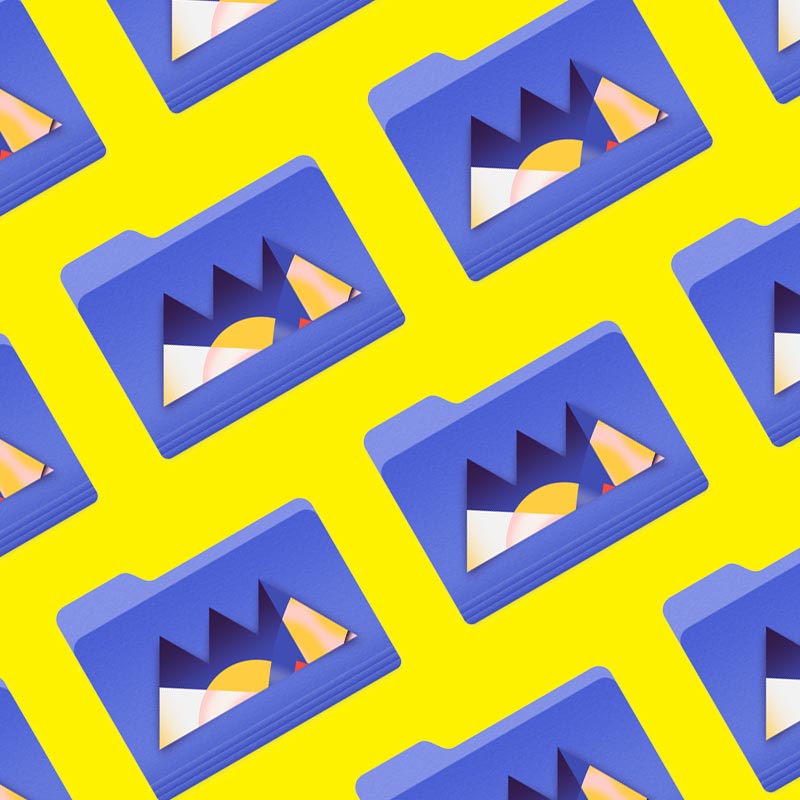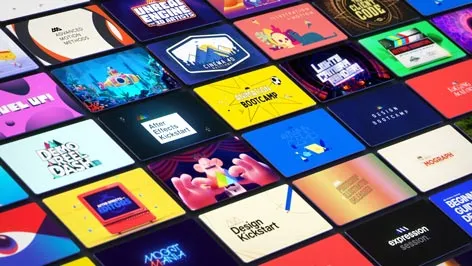What is the secret sauce for great art and animation? Design.
The answer to Life, the Universe, and Everything may be 42, but the key to many questions in our industry just so happens to be Design. Now it may take the backseat to animation in terms of the sheer volume of questions that get tossed around, but if you’ve ever wondered why your work looks a little off...the answer is almost always Design.

Far from being a basic skill, the fundamentals of Design flow through everything we create. From still images to advanced 3D animations, it all begins with the Principles of Design. If you don’t know how to build a solid foundation, the rest just falls apart.
In this article, we’re going to dive deep. You’d better pack a sandwich, because we’re not coming back home until we get to the bottom of this.
- What are the Principles of Design?
- How does design fit into larger projects?
- How to get comfortable with Design
What are the Principles of Design?
There are 12 Principles of Design, though some instructors may combine similar ideas. They are:
CONTRAST

The difference between elements within a design that enables them to stand out from each other, such as color, brightness, or size.
BALANCE

Either symmetrical or asymmetrical, balance creates a pleasing image for the viewer and can also combine with Contrast to create more powerful images.
EMPHASIS

Causing certain elements to stand out more than others, such as large bold text to indicate importance, or a single bright color amidst a field of black and white.
PROPORTION

The size of elements in relation to one another. Larger elements are generally seen as more important.
HIERARCHY

The importance of elements within a composition. More important elements should appear more prominent (larger, brighter, etc).
REPETITION

Repeating elements helps reinforce ideas and imply importance.
RHYTHM

The spacing between elements within a composition creates a rhythm, which in turn connects to various emotions. Think of rapidly moving traffic versus more stop-and-go movement.
PATTERN

Repeating shapes can be pleasing to the eye, and easily allow for emphasis and contrast by breaking from the pattern.
WHITE SPACE

An empty area in a composition is as powerful as a pause in a monologue or silence in a song. Without white space, compositions can also feel cluttered and overwhelmed.
MOVEMENT

The way the viewer’s eye will move over the composition, which should be dictated by the hierarchy of the elements.
VARIETY

It’s the spice of life.
UNITY

All the elements of your design must work together to tell the story.
How does Design serve as the foundation for larger projects?
Have you ever wondered how a top-tier studio can knock out so many great concepts in such a short time?

Design is the key.
Design allows you to control the viewer’s eye to create amazing images. The use of contrast and shot composition ensure each piece connects on the first try. This also means planning how the viewer’s attention moves from area to area and scene to scene.
You’re going to want a strong mental database of typefaces, knowing which are more effective given a composition’s color, complexity, and tone. Having a collection of well-paired combinations allows you to add emotional depth to an image while remaining legible.
Something often feels "photographic" or "cinematic" not because of the standard tricks of chromatic aberration or depth of field, but because someone understands how to apply design principles to a three-dimensional scene.
Are you stumped on how your favorite artists have seemingly endless supplies of inspiration?

They’ve tapped into the veins of Contrast, succumbed to the seductive song of Gestalt Theory, and found themselves lost in daydreams of positive and negative Field Reversals.
Not sure what any of those terms are? It’s okay. If you’ve ever felt frozen when you open a new blank document in Photoshop, or spent hours noodling around in Cinema 4D wondering where you’re going, the cure is simple.
Design.
How can you get comfortable with design?

If you’re slowly realizing that you might be lacking in the Design department, rest easy. Many of us have been in—or are currently—in the same position. In an industry where software is changing and expanding at an ever-increasing rate, it is easy to get caught up in the new buttons to push and new renderers to learn.
It can become exhausting to just decide what to learn next. But while you’re considering Houdini or Redshift, take a breath and consider Design. Learn it well and learn it once, and you’ll have a bundle of tools that will serve you well for the entirety of your career.
Are you looking to:
- Confront the fear of the blank page
- Find a direct line to your voice and vision
- Conjure magic in front of clients and friends
- Animate smarter rather than harder
- Figure out the secret to amazing transitions
Learning Design can help all of that.
CONFRONT THE FEAR OF THE BLANK PAGE

Having a stonking good understanding of composition and contrast gives you confidence to get started. If you’ve ever stared at a plain white canvas and panicked, it’s not because you don’t know what to draw. No one suddenly thinks, “Oh, I want to draw an elephant today.” You set out to draw that elephant, but you can't figure out where to begin.
Understanding the fundamentals of design gives you the confidence to draw that first line in the right location, but also the willingness to move that line later once the piece comes together. Most of us are working on a purely digital space, so adjusting the picture shouldn’t be an issue.
FIND A DIRECT LINE TO YOUR VOICE AND VISION

Forming a lifelong relationship with Design manifests your taste: that imperceptible, impossible to explain something that defines what makes you different from everyone else.
Maybe you prefer to see things in the lower third or fitting the Golden Ratio. Maybe you need a splash of color to contrast the overall dark palette, or a perfectly balanced composition.
Look at any artist you admire and try to identify their calling card, that element of Design that exists in every piece.
CONJURE MAGIC IN FRONT OF CLIENTS AND FRIENDS

When no one knows the words you’re using but the results are obvious on-screen, you create awe and wonder with your audience. We’ve all had that moment when working on a particular job. You move something around, add a little bit of this or that, and suddenly the image POPS. Everyone in the room takes a step back. If anyone is wearing glasses, they remove them dramatically (even though they then see worse).
When design elements click, it’s the same as harmony in music. It feels right, it’s pleasing to a part of our brains we don’t think about. And when you understand the principles and apply them in front of a group, they’ll think you’re some sort of wizard and possibly worship you as an eldritch daemon.
ANIMATE SMARTER RATHER THAN HARDER

Design isn’t just about static screens these days. We're in the business of motion, and often we excuse lazy design because we figure the animation will cover up any flaws.
But imagine if you were able to produce better style frames, each following the rules of Design so the individual still shots are just as exciting and dynamic as the final animation. In Into the Spider-Verse, you can pause the movie at any time to see a well-framed still, and that level of artistry makes the animation even better.
Don't sell yourself short by skipping one step to rush on to the next.
FIGURE OUT THE SECRET TO AMAZING TRANSITIONS
These amazing transitions were done by little known artist Andrew Kramer
If you’ve ever wondered how studios you love make those slick and smooth scene transitions, it's not rocket surgery. It doesn’t start with a plugin or curve editing skills. It’s all because of strong design principles.
Strip away the beautiful cel-animated flourishes and fancy compositing, and you’ll find a strong understanding of gestalt theory and figure-ground inversions are the root of all that magic.
Design the career you want!
No matter what role you fulfill in the motion design industry, Design can be your new best friend. Whether you’re looking to solve the riddle of mesmerizing fluid transitions or want to become a styleframing speed demon, the tools of Design will get you where you need to go faster and more confidently.
If you're ready to power up your Design skills, we might have a few options to help get you where you need to go.




